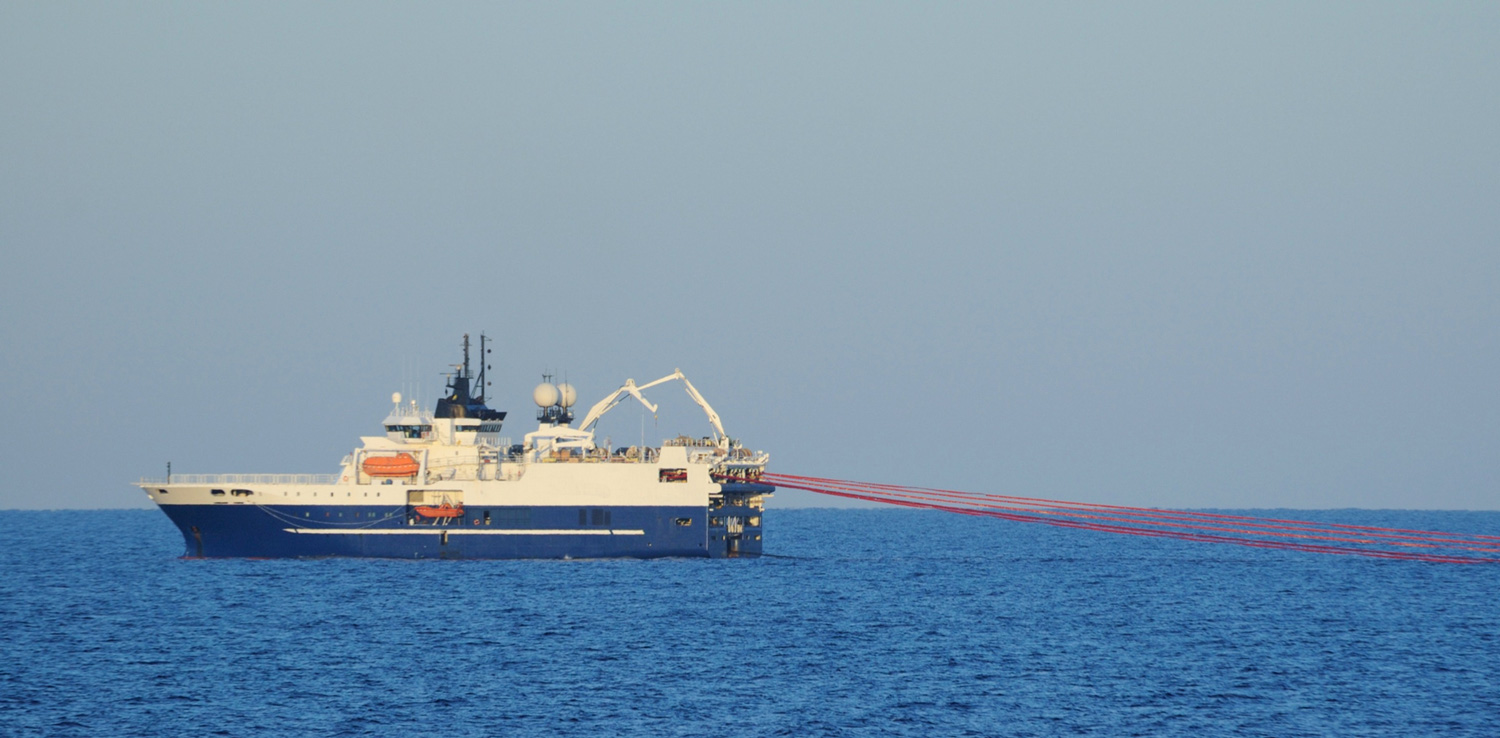Part 1: Marine Geophysical Surveys
Marine environments are dynamic and diverse, serving as crucial hubs for commerce, recreation, and biodiversity. However, harnessing these spaces for human use often necessitates extensive construction and maintenance activities, such as dredging. This process involves the removal of sediment and debris from waterways to facilitate navigation, deepen ports, or reclaim land. While essential for maritime infrastructure, dredging can profoundly impact marine ecosystems, leading to increased turbidity, sedimentation, and disruption of habitats. In response to these challenges, innovative approaches like marine geophysical surveys and the beneficial use of dredged material have emerged as pivotal tools for sustainable development and habitat enhancement.
Before any dredging project commences, understanding the underwater terrain is paramount. Marine geophysical surveys play a crucial role in this preparatory phase by providing detailed insights into seabed topography, sediment composition, and geological hazards. Techniques such as seismic surveys utilize sound waves to image subsurface layers, offering geologists and engineers a comprehensive view of the terrain’s structure and potential obstacles. Similarly, side-scan sonar and multibeam echosounders produce high-resolution maps of the seabed, aiding in the precise planning of dredging operations.
For instance, in the development of new port facilities or the expansion of existing harbors, geophysical surveys can identify suitable locations for dredging activities while minimizing environmental impact. Case studies from projects like the Port of Rotterdam demonstrate how thorough survey data can optimize dredging strategies, ensuring efficient sediment removal while safeguarding sensitive marine habitats.
Part 2: Dredging: Process and Environmental Considerations
The dredging process involves various methods, each tailored to specific project requirements and environmental conditions. Mechanical dredging utilizes excavators or dredging vessels equipped with cutting-edge technology to remove sediment mechanically, offering precision and control over material extraction. In contrast, hydraulic dredging employs powerful pumps to dislodge and transport sediment, making it ideal for operations in confined spaces or areas with soft seabed substrates.
Despite its benefits, dredging can pose significant environmental challenges. Increased turbidity from suspended sediments can interfere with light penetration, affecting photosynthetic organisms and disrupting marine ecosystems. Additionally, sedimentation can smother benthic habitats, reducing biodiversity and altering ecological dynamics. To mitigate these impacts, stringent regulatory frameworks, such as the Environmental Protection Agency’s Clean Water Act in the United States, mandate environmental assessments and mitigation measures for dredging projects. These measures aim to minimize disturbance to marine life and ensure the long-term sustainability of coastal and marine environments.
Part 3: Beneficial Use of Dredged Material
Traditionally considered waste, dredged material is increasingly recognized as a valuable resource with potential applications in habitat enhancement and coastal resilience. The concept of beneficial use involves repurposing dredged sediments for constructive purposes, such as beach nourishment, wetland restoration, or habitat creation. By leveraging sediment from dredging operations, coastal communities can bolster natural defenses against erosion, enhance recreational amenities, and promote ecosystem health.
In practice, initiatives like the Beneficial Use of Dredged Material Program in the Chesapeake Bay highlight the transformative potential of dredged material. By strategically depositing sediment in degraded wetlands or creating artificial oyster reefs, these projects foster habitat recovery and improve water quality, benefiting both wildlife and human populations. Moreover, economic analyses underscore the cost-effectiveness of beneficial use strategies compared to traditional disposal methods, reinforcing their role as sustainable solutions for managing dredged material.
Part 4: Planning and Implementation
Successful integration of marine geophysical surveys and beneficial use strategies requires collaborative planning among diverse stakeholders, including geologists, environmental scientists, engineers, and regulatory agencies. Site investigations play a pivotal role in this process, leveraging data from geophysical surveys to inform decision-making regarding dredging methods, sediment quality assessments, and disposal options. By conducting comprehensive environmental impact assessments and employing innovative sediment management techniques, project planners can minimize ecological risks and maximize the ecological benefits of dredging activities.
Challenges such as sediment contamination and habitat fragmentation necessitate adaptive management strategies and ongoing monitoring programs to evaluate project effectiveness and adjust management practices accordingly. Furthermore, advances in technology, such as unmanned aerial vehicles (UAVs) and real-time monitoring systems, offer new opportunities for enhancing project efficiency and environmental stewardship.
Part 5: Future Directions and Innovations
Looking ahead, the future of marine geophysical surveys and beneficial use of dredged material is shaped by technological innovation, evolving regulatory frameworks, and growing awareness of climate change impacts. Emerging technologies, such as artificial intelligence and machine learning, promise to revolutionize survey data analysis and enhance predictive modeling capabilities for sediment dynamics and habitat suitability. Sustainable practices, including sediment recycling and ecosystem-based approaches, are gaining traction as viable strategies for mitigating climate change-induced sea-level rise and enhancing coastal resilience.
By fostering interdisciplinary collaboration and investing in research and development, stakeholders can unlock new opportunities for sustainable marine infrastructure development while safeguarding precious marine ecosystems for future generations.
Conclusion
In conclusion, marine geophysical surveys and the beneficial use of dredged material represent pivotal strategies for balancing human development with environmental conservation in marine environments. By leveraging scientific innovation, regulatory diligence, and community engagement, stakeholders can navigate the complexities of dredging projects while enhancing marine habitats and promoting sustainable coastal development. As global challenges like climate change continue to reshape our coastlines, these integrated approaches offer a blueprint for achieving resilient and thriving marine ecosystems worldwide.
